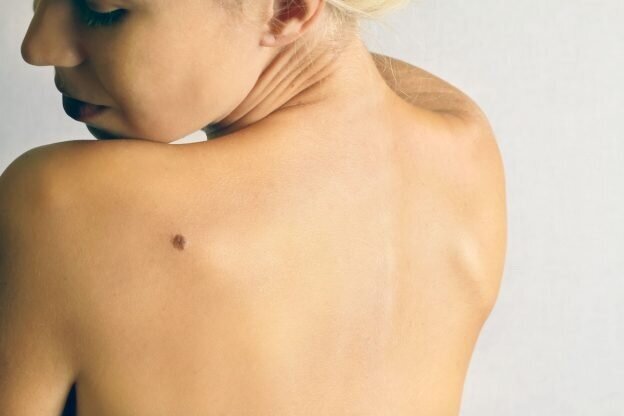
When you’re after peace of mind about a bothersome spot or your skin in general, you want to be treated first as a person - not a series of body parts.
You also want to be looked after by Accredited doctors who are dedicated to helping patients reduce their risk of skin cancer as much as possible by combining their expertise and experience with cutting edge technology.
At NBSCC that’s exactly what you’ll find;
caring, experienced doctors with decades of skin cancer treatment & management expertise
State of the art imaging technologies that can assist the doctors in all forms of skin cancers other concerning lesion or moles.
backed up by excellent pathologists that provide the latest in skin cancer pathology testing
All underpinned by clinic protocols that allow the time it really takes to perform your skin cancer check thoroughly.
Oh, and we’ll make sure that you’re reminded to come in for regular check ups too.
Getting your Skin Checked
What Does Skin Cancer Look Like?
Skin cancer is the uncontrolled growth of abnormal skin cells. It occurs when un-repaired DNA damage to skin cells (most often caused by ultraviolet radiation from sunshine or tanning beds) triggers mutations, or genetic defects, that lead the skin cells to multiply rapidly and form malignant tumours. If a spot strikes you as being a bit odd, take it seriously. Skin cancer mostly appears as a new and unusual looking spot. It may also appear as an existing spot that has changed in colour, size or shape.
What’s Your Risk of Skin Cancer?
Everyone needs to understand melanoma risk factors in order to protect themselves from this potentially deadly cancer. People with a family or personal history of skin cancer, who have many moles or who are very sensitive to sunlight, should be especially careful. Men over 55 should also be on the lookout for any changes in the skin. Checking yourself regularly makes it more likely that you'll notice any unusual growths early enough for them to be treated successfully.
Skin Cancer Prevention
To stay healthy and cancer-free, it's important to take a proactive approach to your skin. Schedule an annual check-up with a specialised doctor to catch any potential problems early on. Perform self-examinations every three months, looking for anything abnormal. When in the sun, make sure to cover up with protective clothing and use sunscreen daily. Protect your eyes with sunglasses. By staying vigilant about these things and adopting these habits, you can keep your skin healthy for years to come.

What Does Skin Cancer
Look Like?

Skin cancer is the uncontrolled growth of abnormal skin cells.
It occurs when un-repaired DNA damage to skin cells (most often caused by ultraviolet radiation from sunshine or tanning beds) triggers mutations, or genetic defects, that lead the skin cells to multiply rapidly and form malignant tumours.
What does skin cancer look like?
Crusty sores that won’t heal
Small red, pale or pearly lumps
Any new spots, freckles or moles that change in colour, size, shape
Thickness over a period of weeks to months
Any spots that are dark brown to black, red or blue-black in colour
How to look?
Remember to check, your face, neck and ears, scalp, front and back of torso, buttocks, arms, legs, hands, palms, feet, soles, and between fingers and toes and finger and toenails. It may help to use a hand held mirror
You may also like to ask your partner or a person you trust to help you look in areas such as your back and scalp which you often cannot see
How often should you look?
You should check your own skin every three months
You should have your skin checked with your GP or at our skin cancer clinics once every year or as advised by your Doctor.
Is That Spot A Melanoma?
Skin cancer generally stands out as being quite different to surrounding skin.
If a spot strikes you as being a bit odd, take it seriously. Skin cancer mostly appears as a new and unusual looking spot. It may also appear as an existing spot that has changed in colour, size or shape.

Some different types of skin cancers
Melanomas
Can grow very quickly. It can become life-threatening in as little as six weeks and, if untreated, it can spread to other parts of the body. It can appear on skin not normally exposed to the sun. It is usually flat with an uneven smudgy outline.
It may be blotchy and more than one colour – brown, black, blue, red or grey. However, some melanomas are pink or skin coloured.
Use ABCDEFG to look for melanoma where:
A = asymmetry, look for spots that are asymmetrical not round
B = border, look for spots with uneven borders
C = colour, look for spots with an unusual or uneven colour
D = diameter, look for spots that are larger than 7 mm
E = elevated
F = firm
G = growing
Nodular Melanoma
A highly dangerous form of melanoma that looks different from common melanomas – they are raised from the start and even in colour (often red or pink and some are brown or black). This type of melanoma grows quickly and can be life threatening if not detected and removed quickly.
Basal cell carcinoma
This is the most common but least dangerous form of skin cancer. It grows slowly, usually on the head, neck and upper torso. It may appear as a lump or dry, scaly area. It maybe red, pale or pearly in colour. As it grows, it may ulcerate or appear like a sore that fails to completely heal or one that does heal but then breaks down again.
Squamous cell carcinoma
This type of skin cancer is not as dangerous as melanoma but may spread to other parts of the body if not treated and can be fatal. It grows over some months and appears on skin most often exposed to the sun. It can be a thickened, red, scaly spot that may bleed easily, crust or ulcerate.
What’s Your Risk of Skin Cancer?

Anyone can get melanoma but these factors increase your risk.
YOU have previously had a skin cancer and/or have a family history of skin cancer
YOU have a large number of moles on their skin
YOU have a skin type that is sensitive to ultraviolet (UV) radiation and burns easily
YOU have a history of severe/blistering sunburns
YOU spend lots of time outdoors, unprotected, during their lifetime
YOU actively tan or use solariums or sunlamps work outdoors
YOU are male and over 55 years. Check your whole body from head to toe, front, back and sides. Check your head and neck and don’t forget your scalp, ears, face and lips. Don’t forget the soles of your feet and under your nails.
Family skin cancer history factors include:
A personal history of melanoma at an early age; the average age to be diagnosed with melanoma is 33 years
A personal history of more than one melanoma
Many moles on your skin; more than 10 on the arms and 200 on the body
Many unusual moles
A blood relative diagnosed with melanoma at an early age
A blood relative diagnosed with more than one melanoma
A blood relative diagnosed with melanoma of the eye.
A change in your moles - what you need to watch out for.
Size – A mole may expand sideways or become raised. This may be the first sign of a highly dangerous form of melanoma (a nodular melanoma).
Shape – Change in shape/ irregular border Change in shape is usually from an oval or round mole to an irregular (coastline) shape. Most harmless moles have smooth regular borders. Melanomas often have irregular borders.
Colour – Change in colour watch for moles that change colour. Melanomas often develop a blue or black colour. Sometimes many different colours such as red, pink, purple or grey may develop and some areas may become lighter.
The more moles you have on your skin, the higher the risk of the most dangerous type of skin cancer – melanoma. Moles are overgrowths of melanocytes (a type of skin cell).
We are not normally born with moles, but most of us will develop some on our skin by 15 years of age. The number of moles we develop is determined by genetic (inherited) factors and exposure to ultraviolet (UV) radiation.
Australians tend to have more moles than people living in other countries, possibly because of their childhood sun exposure
Check your skin-type risk
Type I – Often burns, rarely tans. Tends to have freckles, red or fair hair, blue or green eyes. Or if you have a family member that has had skin cancer previously.
Type II – Usually burns, sometimes tans. Tends to have light hair, blue or brown eyes.
Type III – Sometimes burns, usually tans. Tends to have brown hair and eyes.
Type IV – Rarely burns, often tans. Tends to have dark brown eyes and hair.
Type V – Dark brown skin. Rarely burns, tans profusely.
Type VI – Deeply pigmented, dark brown to black skin. Never burns.
Yes, the risk of skin cancer decreases as you move down the list as the larger amount of melanin in very dark skin does provide some protection. However, even if you have dark skin, it is still important to exercise caution when contemplating spending time in the sun. Did you know that Bob Marley died from skin cancer?
Latest skin cancer technologies

Technology That Can Save Your Life
Rest assured that your wellbeing is our primary focus and our highly skilled team is dedicated to providing you with the best possible care. We believe that every second counts when it comes to skin cancer, which is why we utilise a range of state-of-the-art technologies during your consultation to ensure that we detect and diagnose any potential issues as quickly and effectively as possible.
Other Types of Skin Damage
If you don’t protect your eyes with good quality sun glasses or goggles if you’re skiing, high UV levels can cause eye damage regardless of skin type. And those same high levels of UV exposure can also have damaging effects on the immune system too, so it’s important to take the appropriate measures to protect yourself from the sun, regardless of your skin type.











